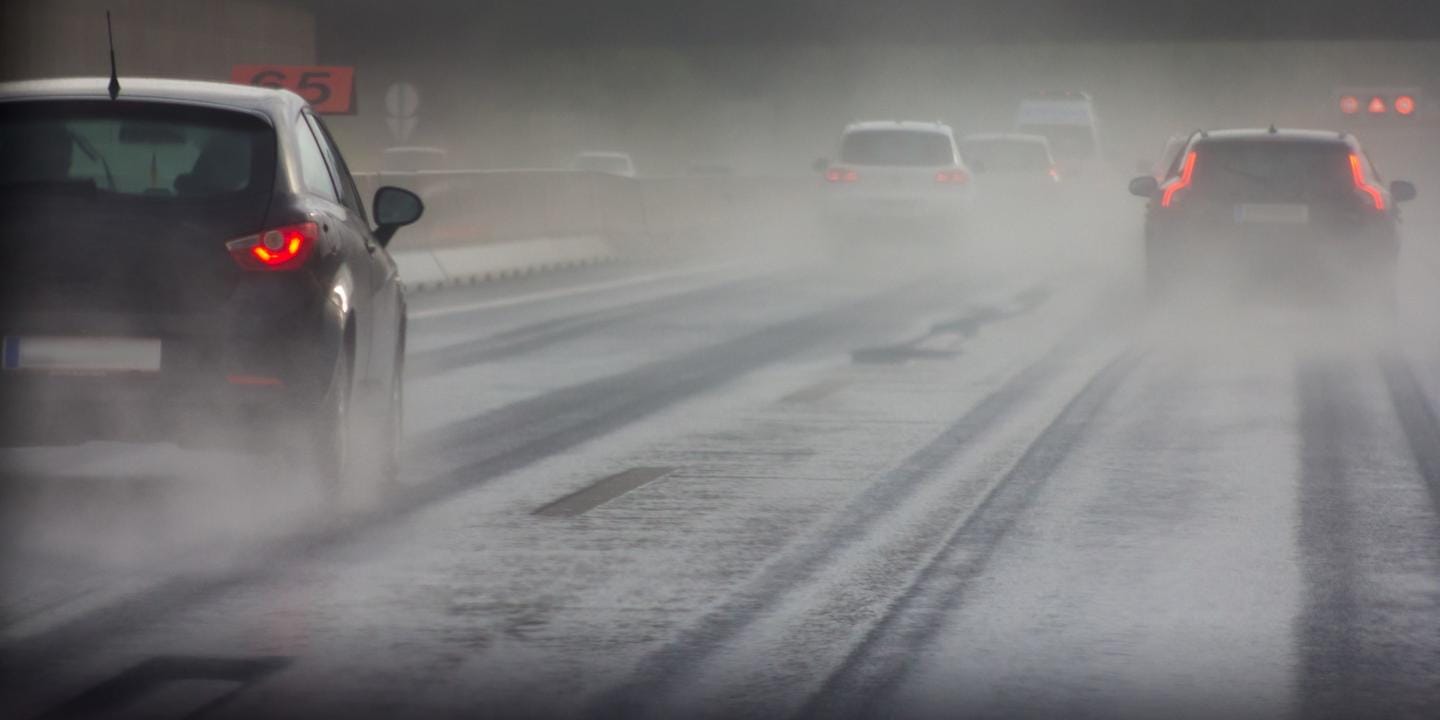How to drive safely in the rain
Are you a good driver in the rain? Are you sure? Because when the weather is bad, we are never short of new record levels of traffic. The spray and slippery roads do not make it easy for you, the driver. But with proper preparation and adapted driving behaviour, you avoid bumping into something or someone, or worse.

Step 1: Double check your car
Before you brave the rainy weather, make sure your car is prepared for the trip. Remember:
- Lights
You need dipped-beam headlights to see better and be seen in rain, snow and fog. And in the dark of course. Your fog lights are indispensable when the road is very misty. After all, it is all about seeing and being seen.
- Windscreen wipers
In heavy rain, having a good view of the road is more difficult. So, check in advance whether your windscreen wipers still work smoothly and whether your reservoir is properly filled with windscreen washer.
- Tyres
On wet surfaces, your tread depth should be 2.5 to 3 mm as a minimum. The channels or grooves in your tyres drain the water, reducing the chances of aquaplaning.
Step 2: Drive slowly
You want to get to work, your appointment or back home on time. We understand that. But when it rains you will simply not get there as quickly as usual. The faster you drive, the more water your tyres have to drain and the more difficult it is for your treads to process that water in time. This increases the risk of skidding or aquaplaning.
Step 3: Keep your distance
Keep enough distance from the car in front of you. Your car’s reaction speed is a lot slower when wet, resulting in a braking distance at least twice as long. Tailgating is never a good idea and certainly not on wet roads. It is also more difficult to estimate distances in rain and fog.
Do you feel that the car behind you is too close? Do not rush. Just let it pass, this reduces the risk of a collision.
Step 4: Make sure you can see clearly
Obviously, you have to use your windscreen wipers in the rain. But do not forget about your ventilation and heating. If you are familiar with your car, of course you know how to clear any fogged-up windows quickly.
Step 5: Be ready for fog
On autumnal or wintry days, the fog sometimes surprises you. Stay calm and do the right thing. Can you still see about 200 meters ahead of you? Then switch on the front fog lights, but not the rear ones. And only use your normal dipped-beam headlights so that you do not dazzle oncoming traffic.
Can you see less than 50 metres ahead of you in very dense fog? Then switch on both your front and rear fog lights. Reduce your speed considerably.
What is aquaplaning?
Aquaplaning is when the grooves in your tyres can no longer drain the water between the road surface and your tyres. Then your car floats, as it were, on the puddles. Clearly a very dangerous situation. What should you do if it happens?
- Release the accelerator and depress the clutch pedal
- Do not pump the brakes if you have ABS.
- Do not make any sudden moves with the steering wheel.
- Wait until your tyres have grip again.
- Focus on the direction you want to go, not on any obstacles.
Did you still have an accident? Then contact Carr&Repair of course.